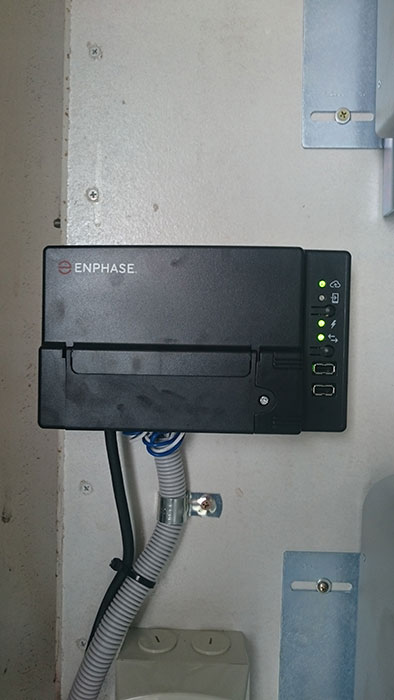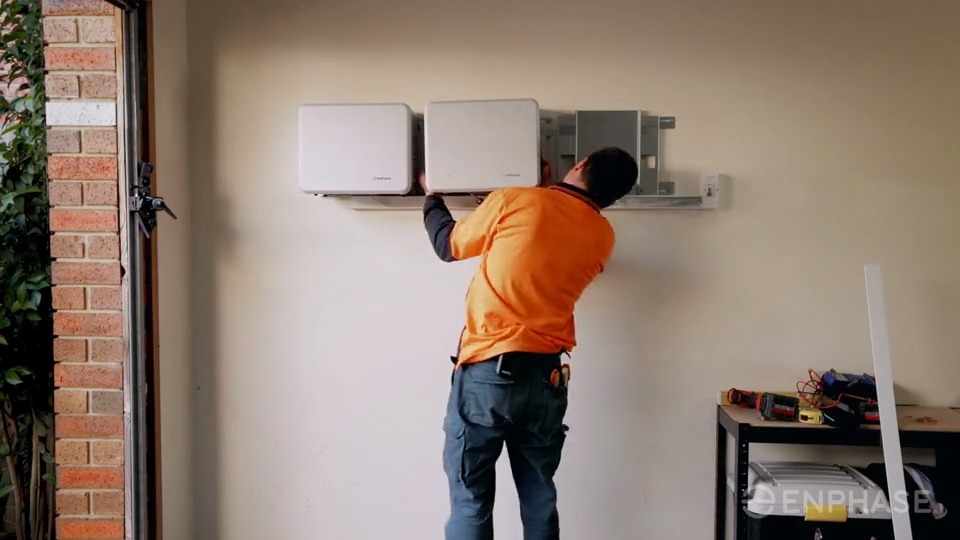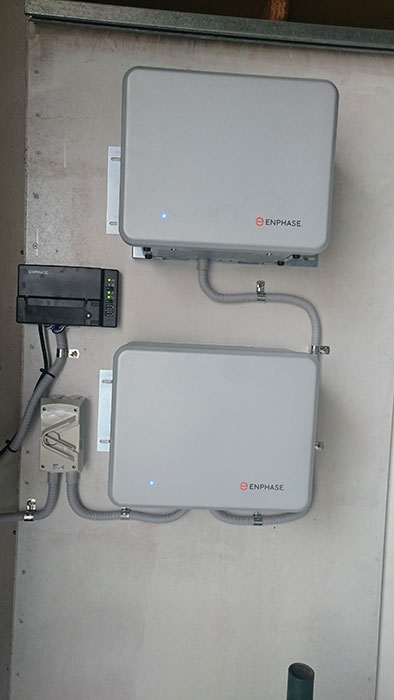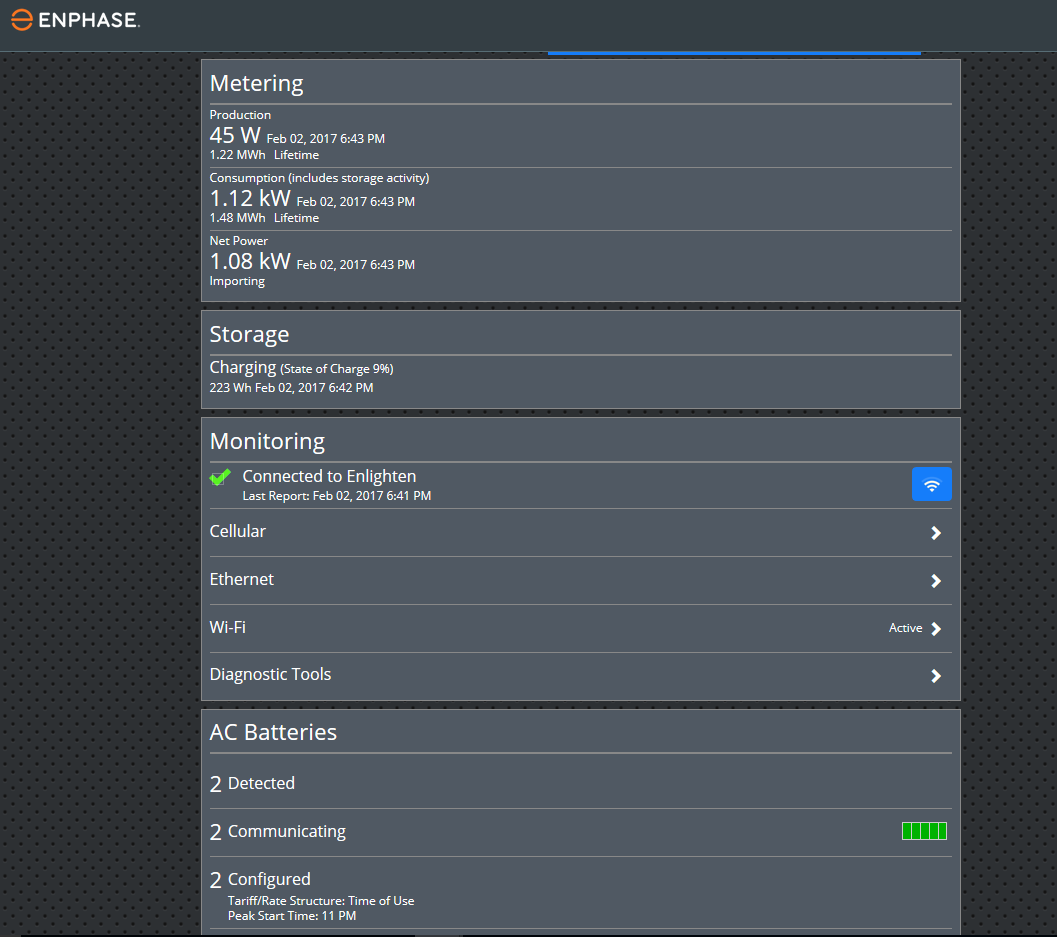Solar Energy Battery Storage
Cost – $5500 for a 2.4 kWh system fully installed.
Use with new or existing solar panels. Save on energy costs by using solar batteries at night.
Call Lisa on 08 9240-2331 to arrange a viewing of our demo site at EFI Autos in Balcatta: Google Maps.
How it Works
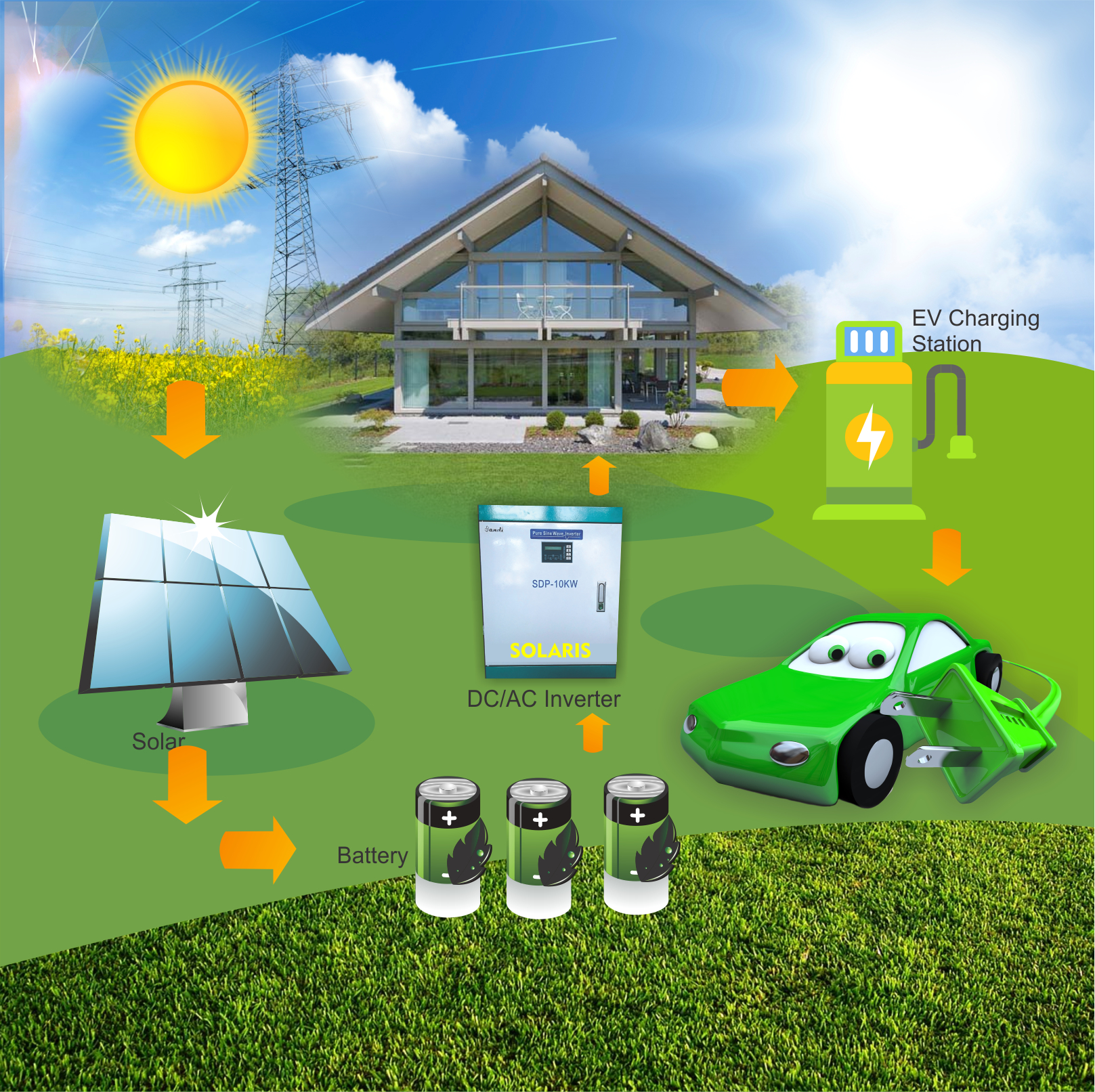
Usage Patterns
The Enphase battery system is primarily designed to store excess energy generated by solar panels during the day for use at night. The Enphase is appropriate for buildings with solar panels that generate excess energy during the day in circumstances where there is no rebate for energy exported to the grid. Solar panels installed on buildings which are empty during the day provide little or no benefit to the owner or occupier as the power generated by the solar panels is unused or exported to the grid for no financial benefit.
The solar array must be sized so that the batteries get an opportunity to re-charge during the day. The energy produced by the solar array during the day must be sufficient to recharge the batteries while at the same time providing power to the building. An Enphase battery pack cluster with a capacity of 5.7 kWh will not charge fully during the day unless the solar array on the building generates a surplus of 5.7 kWh per day. Prospective battery pack owners should calculate the average daily production of the solar array on the building Vs the average daily consumption of the building to determine whether or not the solar array generates an energy surplus. The battery pack solution can then be sized to match the surplus production.
More information about the average daily production of solar arrays can be found here: click here
The Enphase battery system is designed to work with grid tied systems. It is not an off-grid or battery backup solution.
Surge Pricing
The Enphase battery system will help reduce exposure to surge pricing in the event that electricity retailers start charging a premium for power consumed between 16:00 and 19:00. The Enphase batteries can be configured to start discharging after a specific time in the day such as 16:00.
System Reports
The Envoy S mini computer is network capable and can be connected to a local area network via WI-FI or fixed line network cable. System reports can be viewed via the MyEnlighten smart phone app or the Envoy S web page. The Envoy S can be configured to connect to the remote MyEnlighten web portal so that system reports can be viewed on any PC via the system owners MyEnlighten user account.
Enphase Batttery Storage System
The Enphase battery storage system consists of two components, an energy meter (Envoy-S) that monitors energy consumption and production and a lithium ion battery pack or packs with an integrated battery management system and inverter.
Envoy-S Energy Meter
The Envoy S Energy meter is a mini computer that measures the energy production from a solar array and the energy consumption of the building. Energy production and consumption is measured via current transformer clamps which are connected to the AC output circuit of the solar array inverter and the AC inbound circuit of the mains supply to the building. The current transformer clamps are wired back to the Envoy-S which monitors the flow of energy into and out of the building. If the building is exporting energy to the grid the Envoy S signals the Enphase batteries to start charging in order to use up the surplus energy. If the building is importing energy from the grid the Envoy-S signals the Enphase batteries to start discharging in order to reduce the amount of energy imported from the grid.
The Envoy S is three phase compatible. A current transformer clamp can be connected to each phase of the AC output circuit of a three phase solar array inverter and to each phase of a three phase AC inbound mains circuit. Up to six current transformer clamps can be connected to the Envoy S.
The Envoy S communicates with the Enphase batteries using Powerline IP communication. The Envoys S itself is powered from one of the existing AC circuits in the building and will detect any Enphase batteries installed on AC circuits in the building.
The Envoy S can be configured not to discharge the Enphase battery packs until after a certain time such as five pm in the evening.
Enphase Battery Packs
Each Enphase battery pack is a self contained module consisting of battery cells, battery management system and integrated AC/DC inverter. Mutiple Enphase battery packs can be daisy chained together and installed at various locations around the building. The battery packs are connected to an existing AC circuit. The battery packs will draw power from the AC circuit and start recharging when signaled by the Envoy S that the building is producing surplus energy and exporting to the grid. The batteries will discharge power into the AC circuit when signaled by the Envoy S that the building is importing energy from the grid. The building draws from the external grid when the batteries reach their reserve.
Each Envoy battery pack has a usable capacity of 1.14 kWh and a discharge rate of 260 watts continuous. A cluster of 5 battery packs will provide 5.7 kWh of battery capacity and 1.3 kW of power. Up to 13 Enphase battery packs can be installed in a cluster giving a total output of 14.8 kWh and 3.38 kW of power.
Enphase battery packs have a 10 year warranty.
Electric Car Owners
The Enphase battery system is particularly appropriate for electric car owners who wish to charge their vehicles in the evening from solar power generated during the day. An electric car uses an average of 1 kWh of power per 5 km of travel at freeway speeds. An electric car owner who travels 50 km per day uses around 10 kWh of power. In Perth a 5 kW solar array generates around 21 kWh per day. A cluster of 9 Enphase batteries will deliver 10 kWh of power at 2.34 kW continuous. An electric car pulling at 3 kW will get most of its power from the battery pack. The rest will come from the grid.
An electric car owner who wishes to re-charge an electric car entirely from the battery needs a pack that is sized to re-charge the car and provide power to the house overnight. Otherwise an electric car which starts charging in the evening will quickly deplete the battery pack and the building will cut back to the grid.


